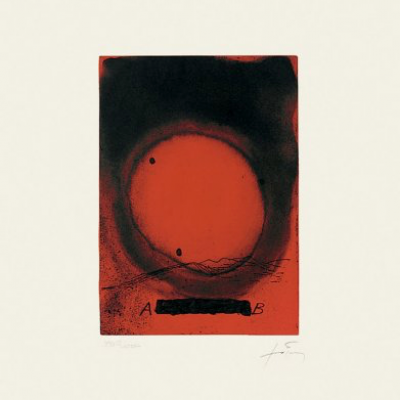
Details
Artist
Styles
Richard Serra's Transversal #4, created in 2004, is an imposing etching that exemplifies his fascination with density, weight, and the spatial impact of abstract forms. This limited edition print, measuring 228 x 121 cm, draws viewers into its sheer, uninterrupted expanse of black. The deep, inky surface invites contemplation of texture, depth, and presence, qualities that echo Serra’s sculptural works. By using etching, Serra achieves a unique visual density that enhances the sense of mass within a two-dimensional space. The artwork is part of a limited edition of 38, each signed by the artist.
Transversal #4, 2004
form
Medium
Size
228 x 121 cm
- Inches
- Centimeters
Edition
Range
- USD
- EUR
- GBP
Details
Artist
Styles
Richard Serra's Transversal #4, created in 2004, is an imposing etching that exemplifies his fascination with density, weight, and the spatial impact of abstract forms. This limited edition print, measuring 228 x 121 cm, draws viewers into its sheer, uninterrupted expanse of black. The deep, inky surface invites contemplation of texture, depth, and presence, qualities that echo Serra’s sculptural works. By using etching, Serra achieves a unique visual density that enhances the sense of mass within a two-dimensional space. The artwork is part of a limited edition of 38, each signed by the artist.
- Recently Added
- Price (low-high )
- Price (high-low )
- Year (low-high )
- Year (high-low )
Richard Serra
Between The Torus And The Sphere III, 2006
Limited Edition Print
Etching
EUR 20,000 - 30,000
Richard Serra
Between The Torus And The Sphere IV, 2006
Limited Edition Print
Etching
EUR 20,000 - 30,000
What is Arte Povera?
A movement and style in art that originated in Italy during the 1960s. It integrates elements of minimalism, performance art, and conceptual art by using everyday or seemingly worthless materials, such as newspapers, stones, or rags. The goal was to challenge and subvert the commercialization of art.
















